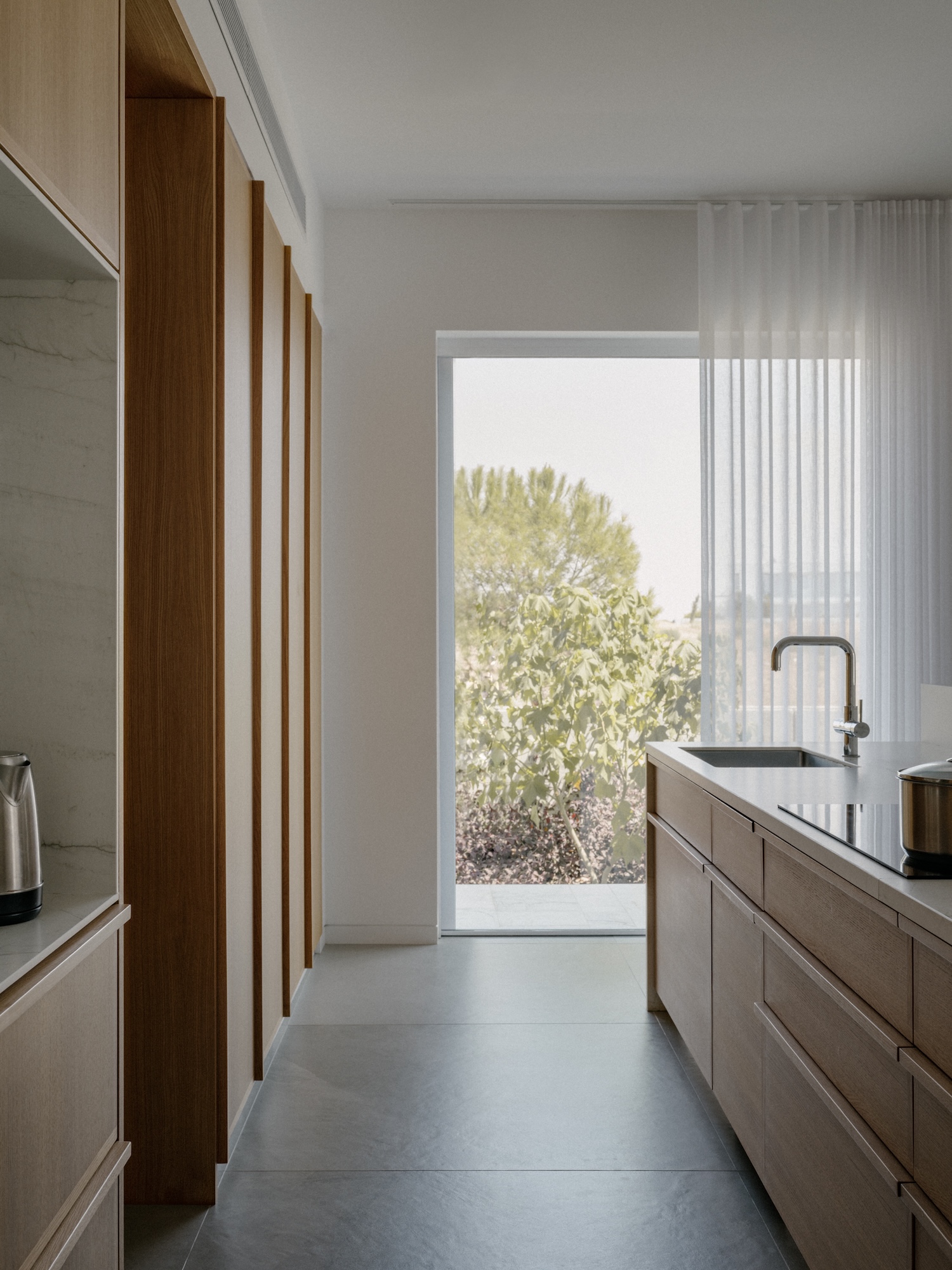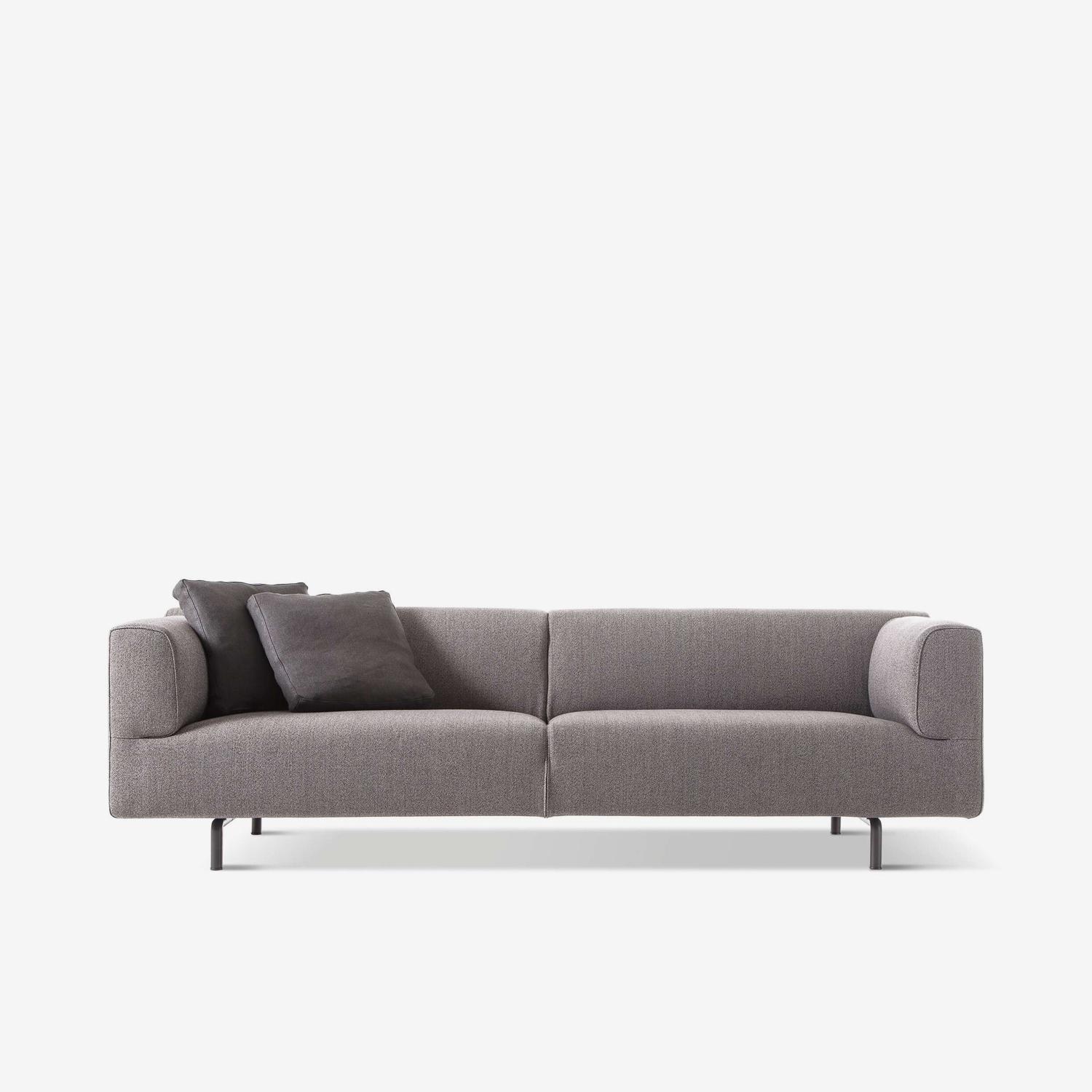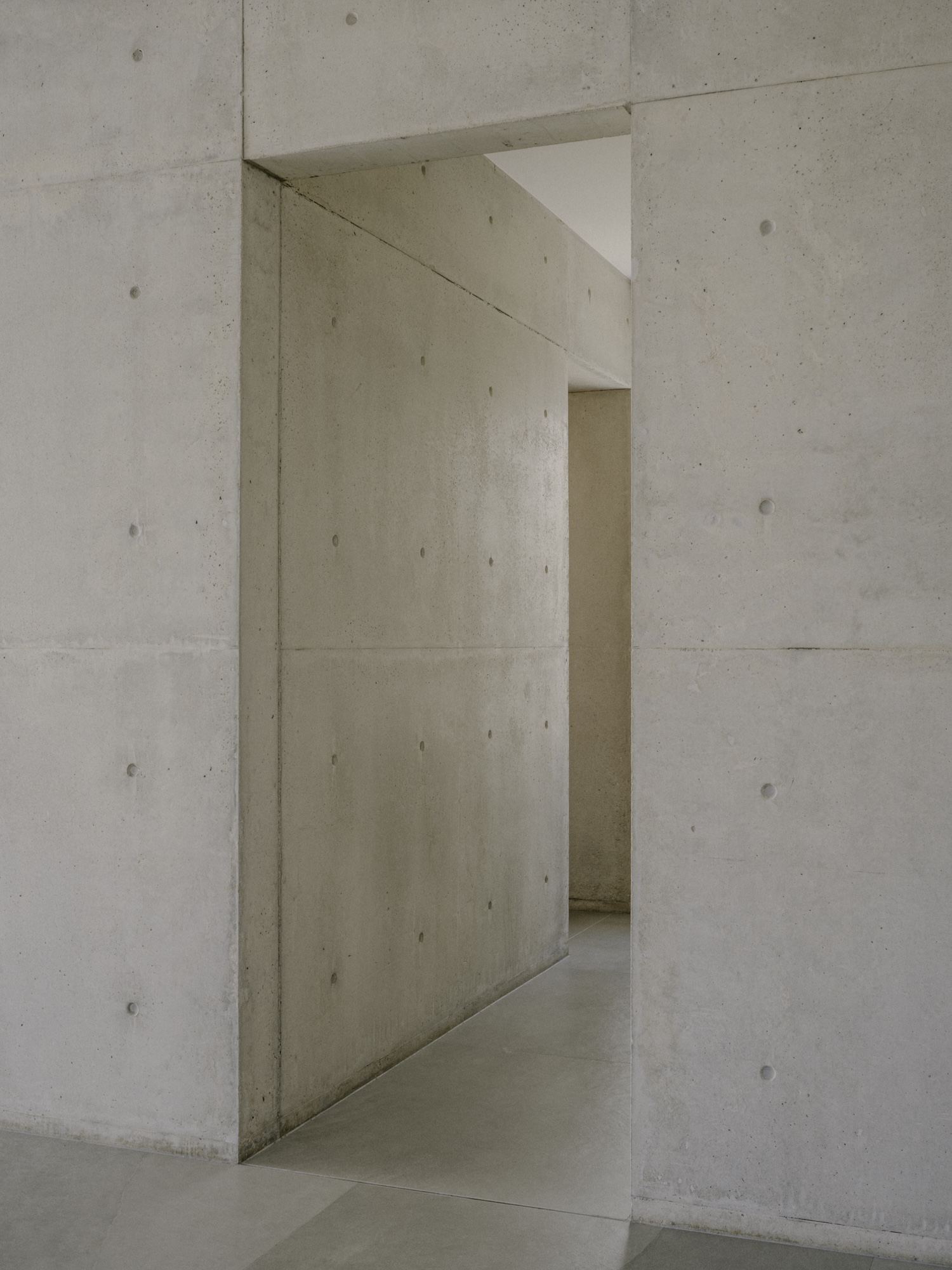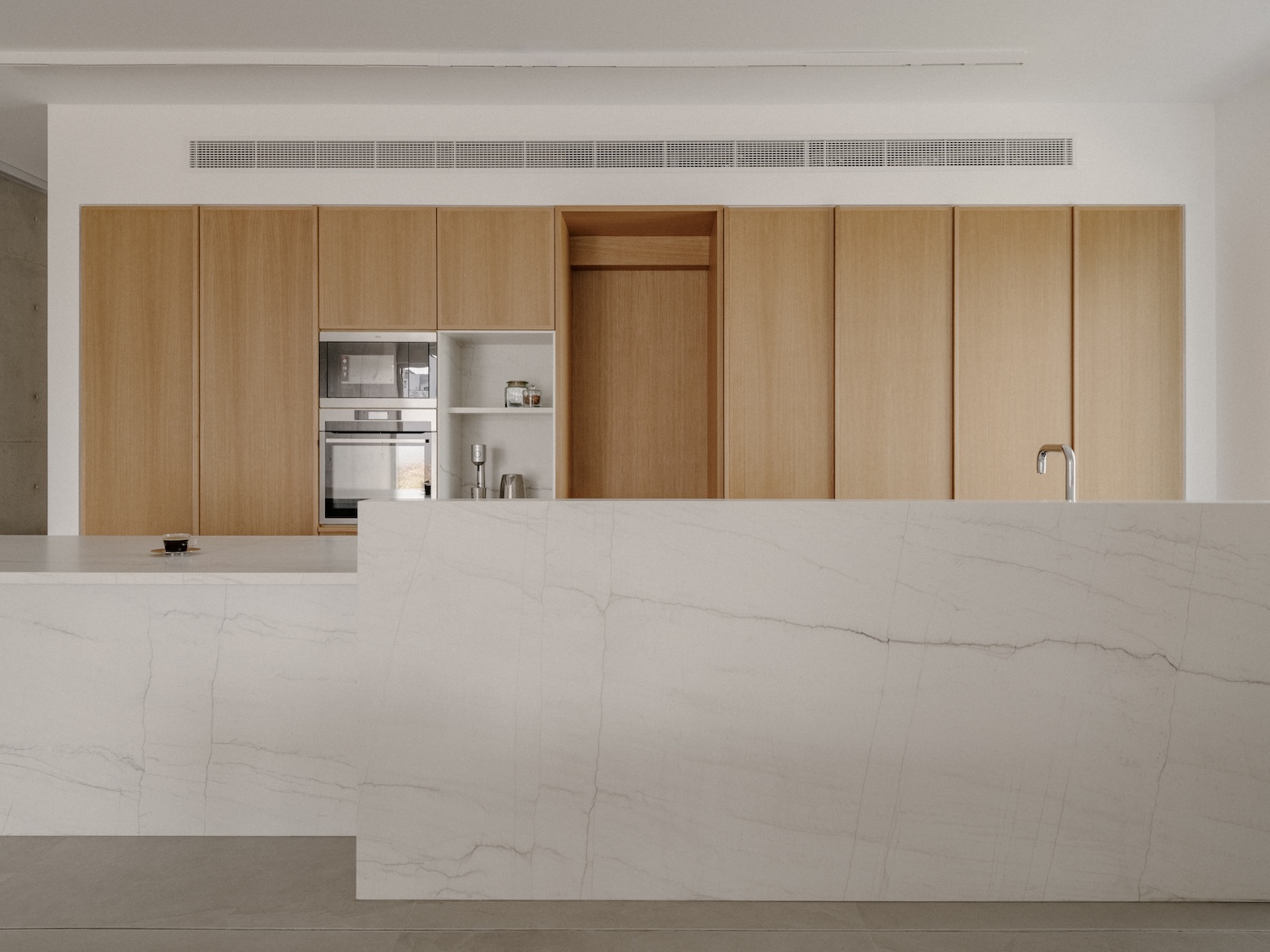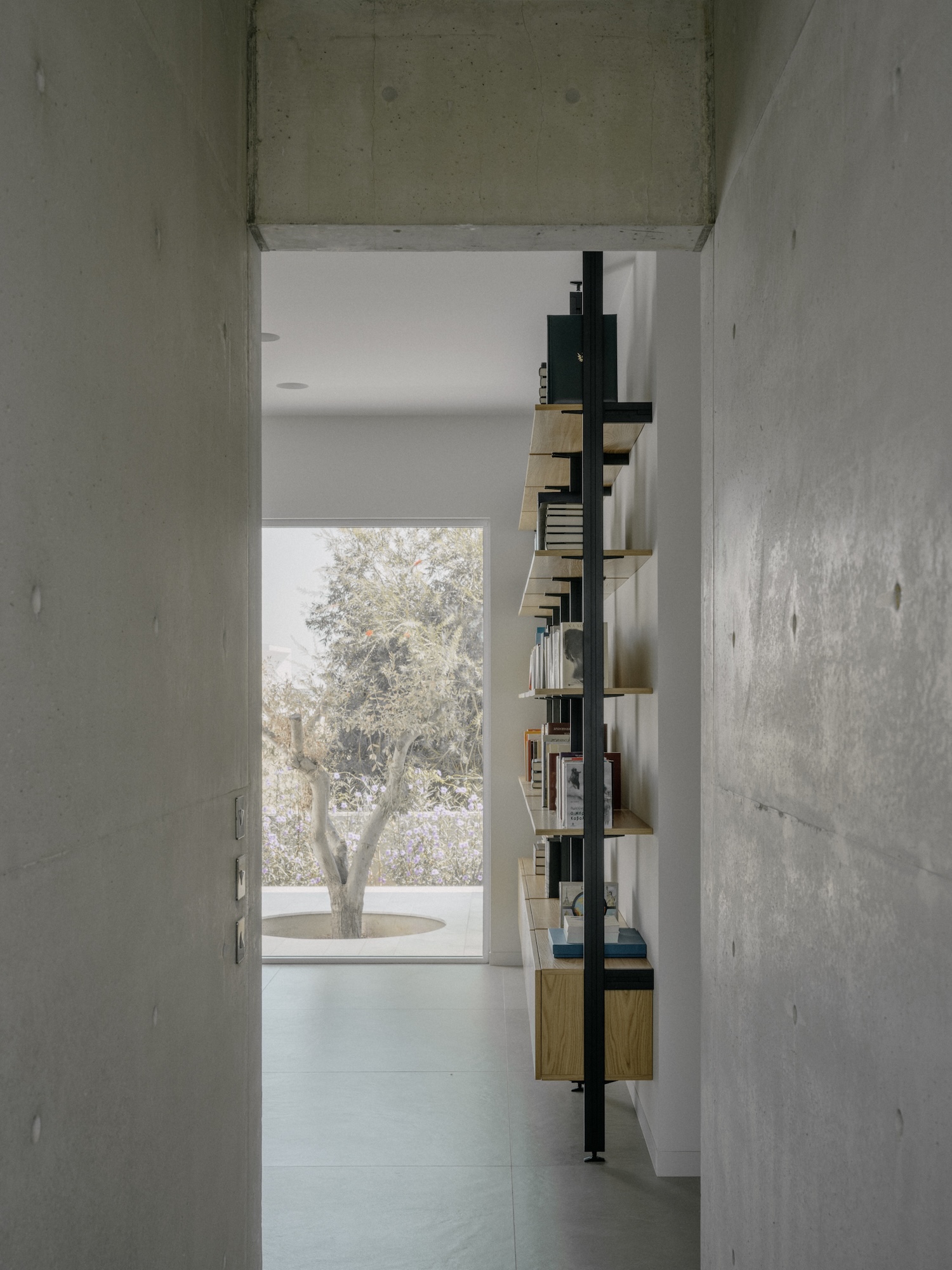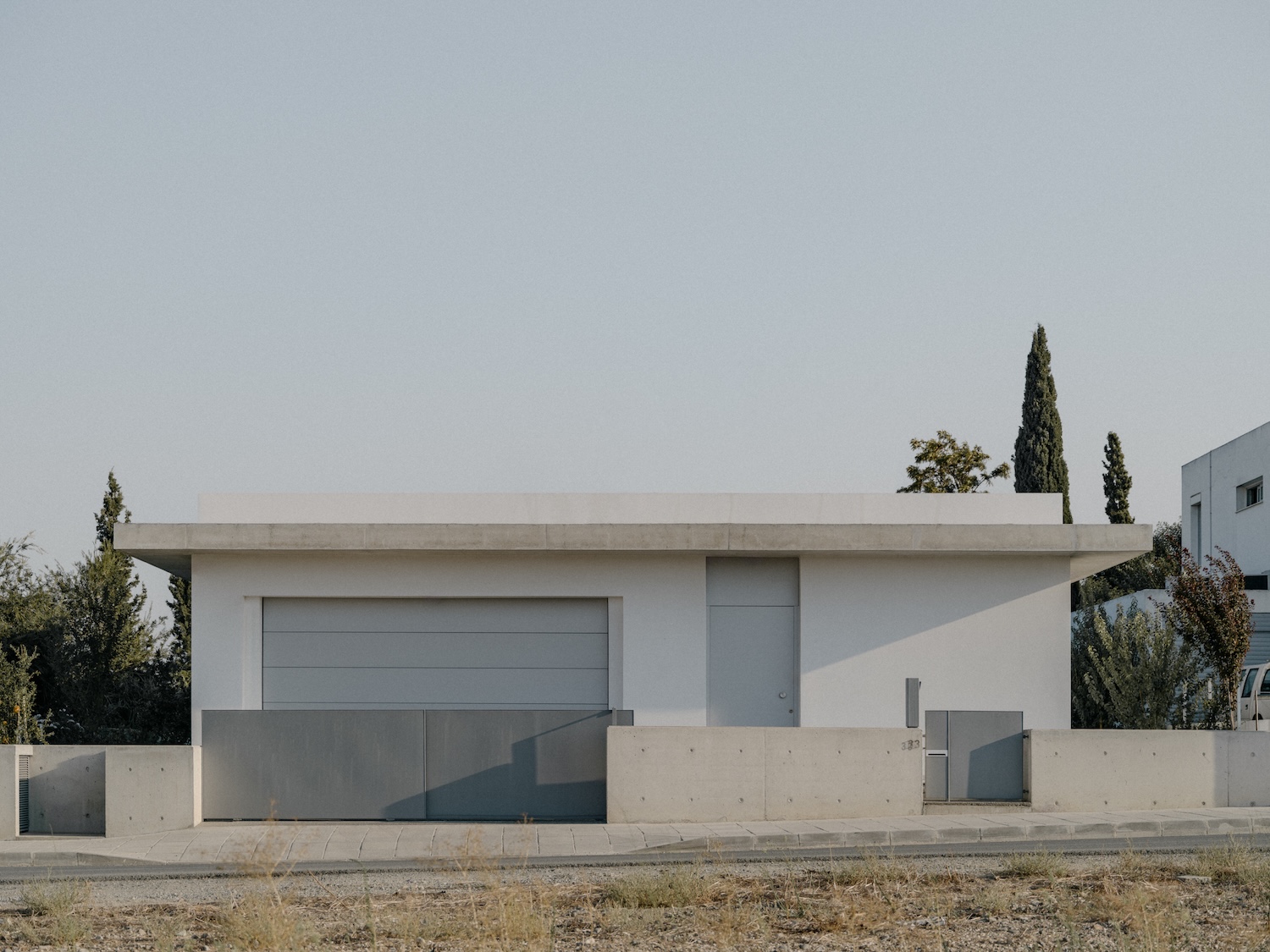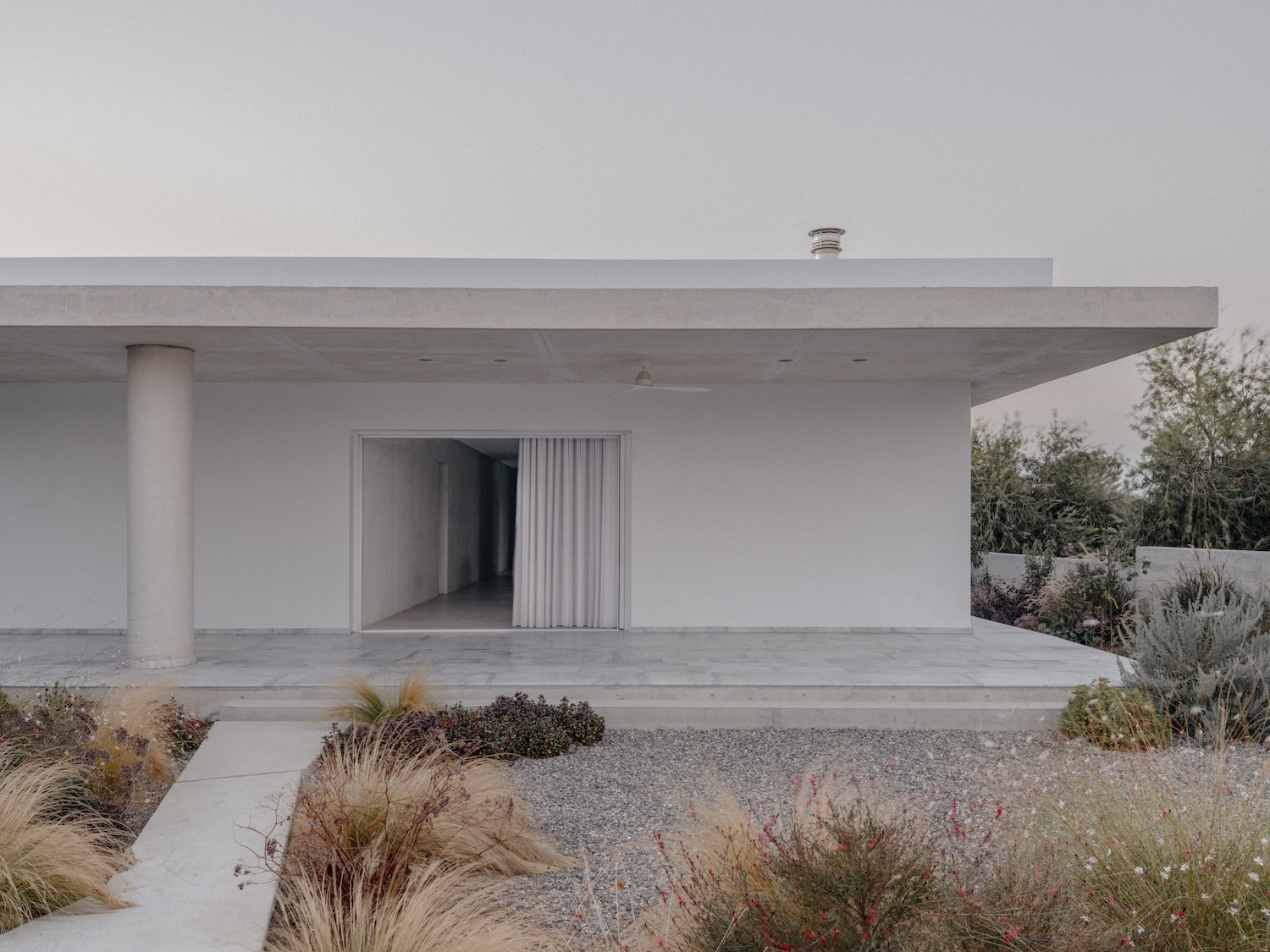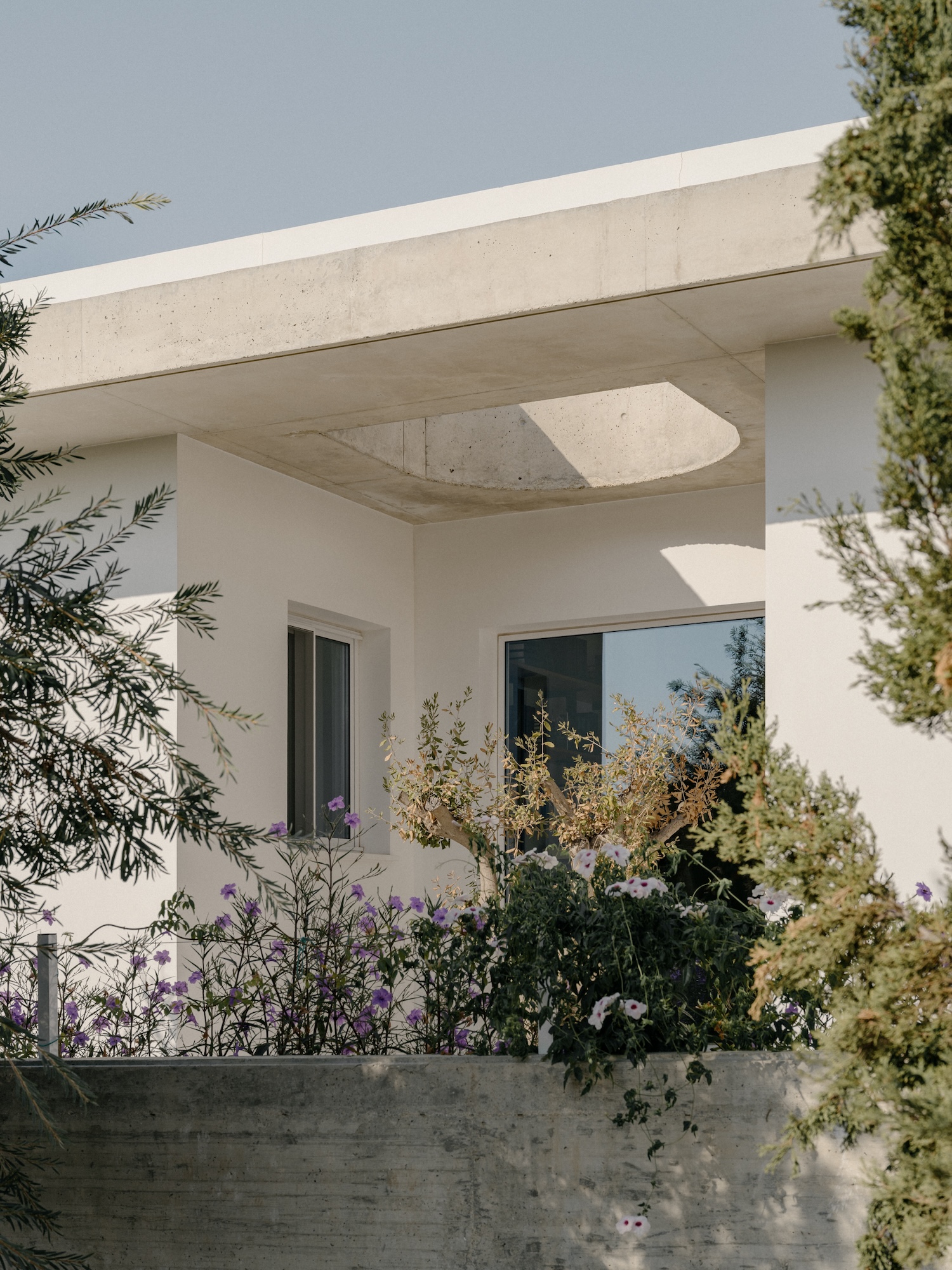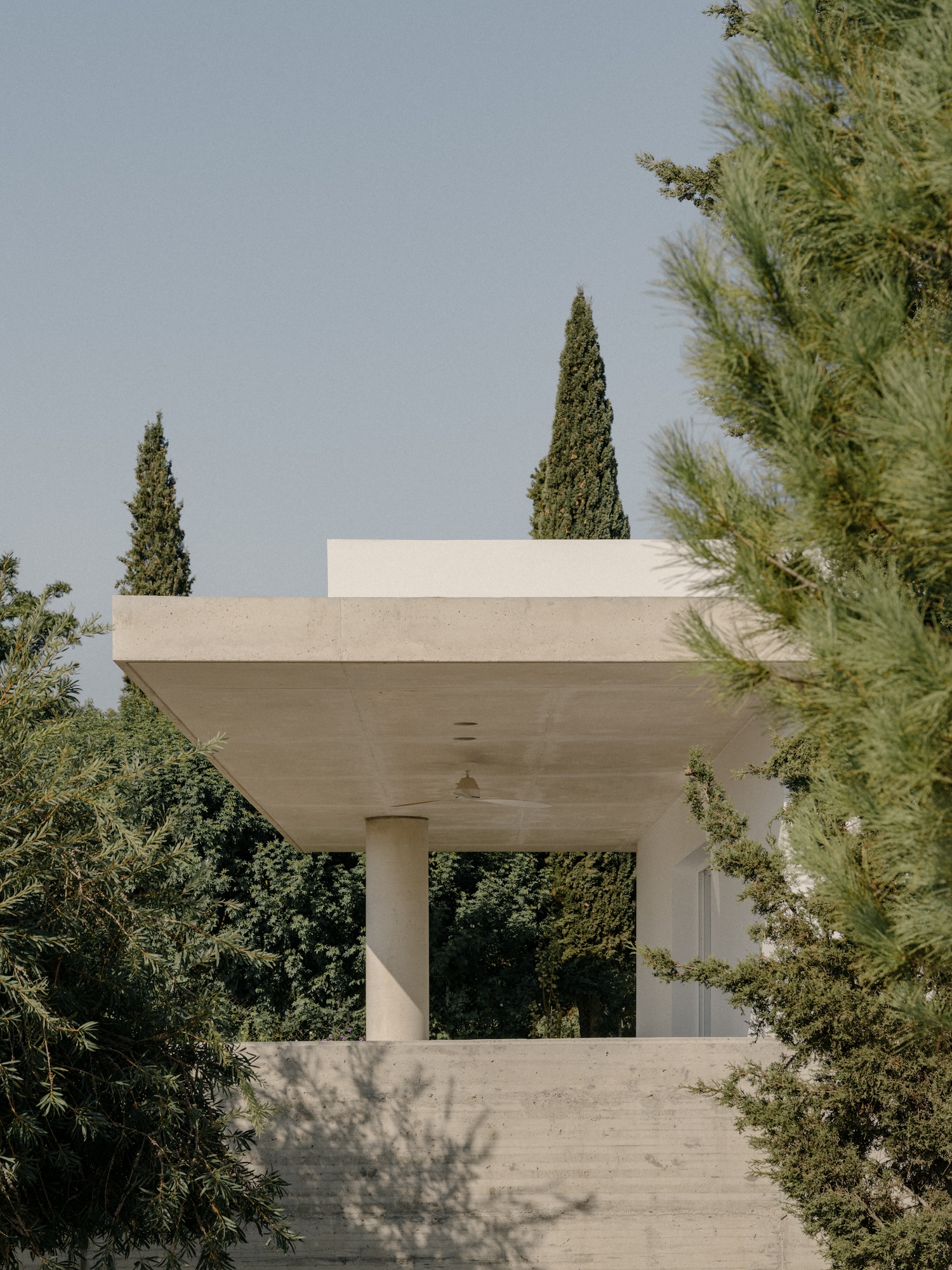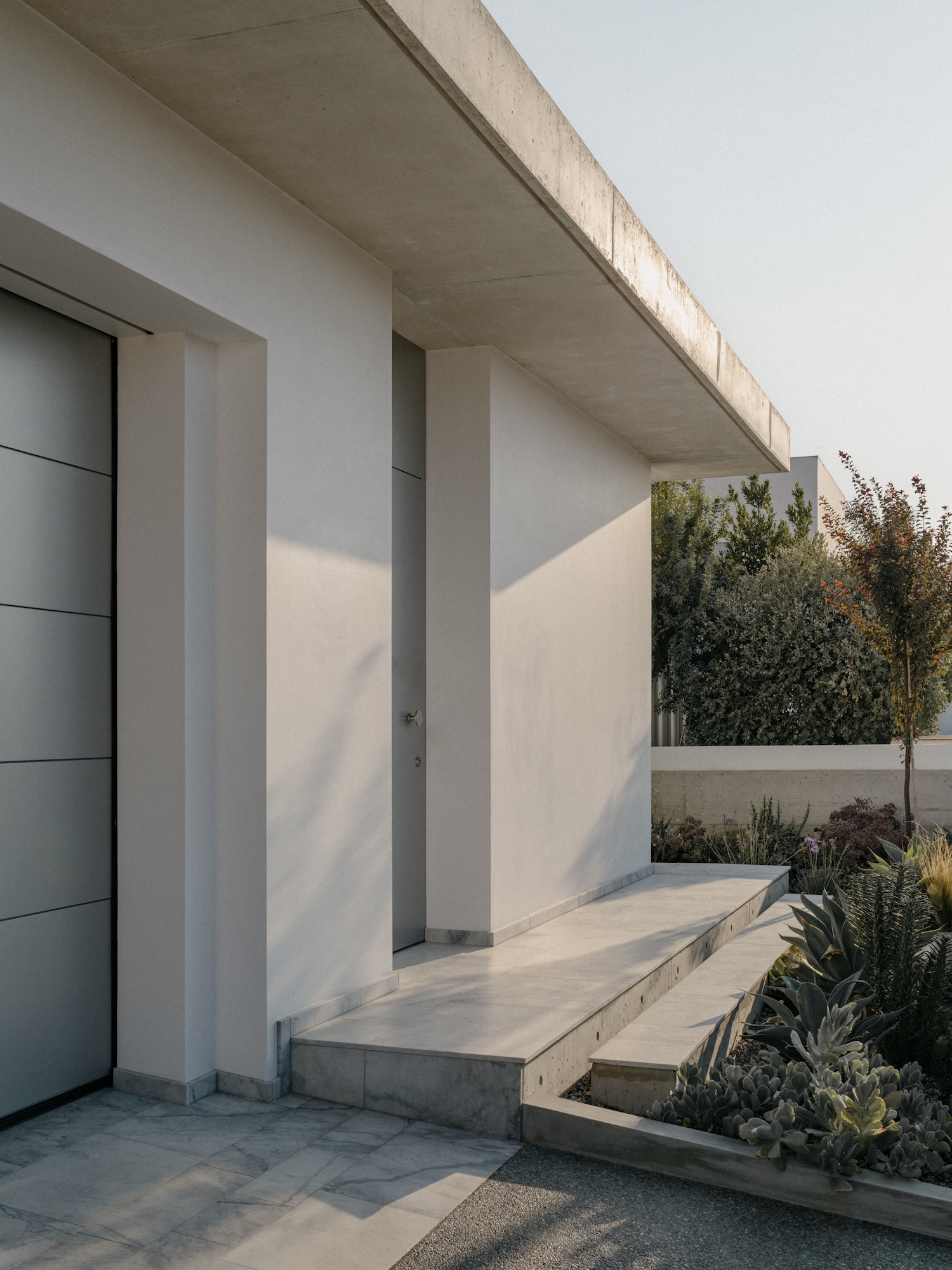Makries Mires Residence is a minimal home located in Nicosia, Cyprus, designed by Anastasiou Misseri. In the sun-drenched outskirts of Nicosia, a modernist vision emerges through a deceptively simple gesture: a floating concrete canopy resting gracefully on a lone cylindrical column. This bold architectural statement immediately recalls Le Corbusier’s foundational principles, particularly his use of pilotis, yet reinterprets them for contemporary Mediterranean living. The house’s defining feature – its table-like structure – transforms the very notion of shelter into a meditation on furniture design at an architectural scale.
The 4-meter cantilevered canopy functions much like an oversized table, creating a dialogue between architecture and furniture that blurs the boundary between the two disciplines. This relationship is particularly evident in the way the concrete column, much like the singular pedestal of Eero Saarinen’s iconic table designs, provides both structural support and sculptural presence. The column’s proportions and placement demonstrate an understanding of scale that bridges domestic furniture and architectural space.
The interior’s organization around a 17-meter concrete wall reveals a sophisticated approach to spatial division that echoes contemporary room divider and shelving systems. This wall becomes more than just a partition – it’s a sculptural element that, like a well-designed cabinet or sideboard, serves both functional and aesthetic purposes. The limited connectivity between zones (through only two openings) creates a choreographed movement pattern that speaks to the careful consideration of human scale and daily rhythms.
The dwelling’s division into east and west zones demonstrates a nuanced understanding of environmental design principles. The bedroom spaces, positioned to capture evening breezes, and the living areas, oriented toward landscape views, reflect a design philosophy that prioritizes human comfort and connection to nature. This zoning strategy recalls the thoughtful positioning of furniture pieces in a well-composed room, where each element is placed with intention and purpose.
